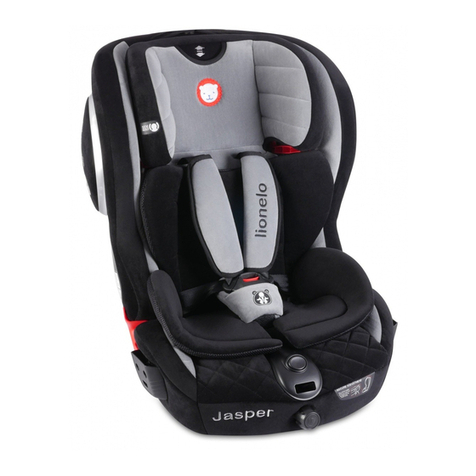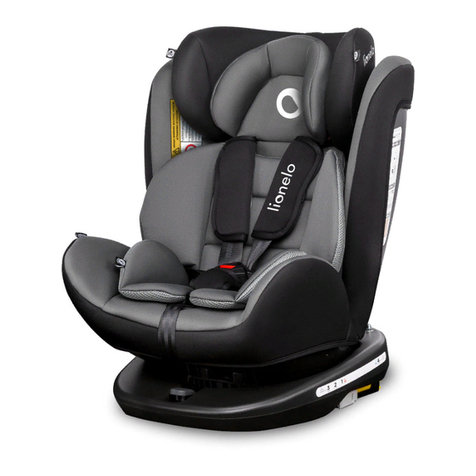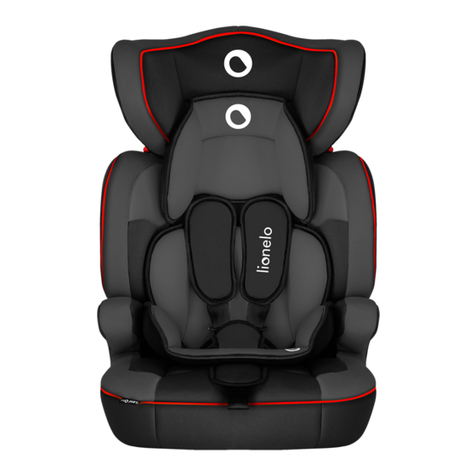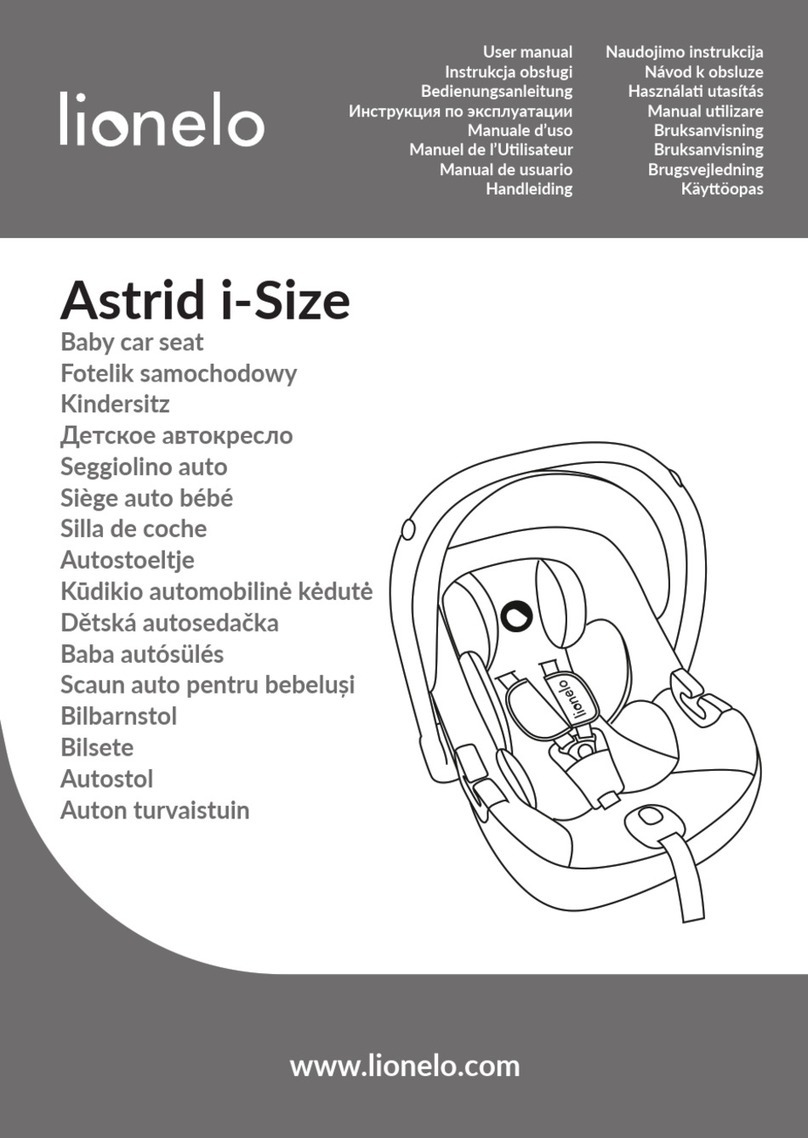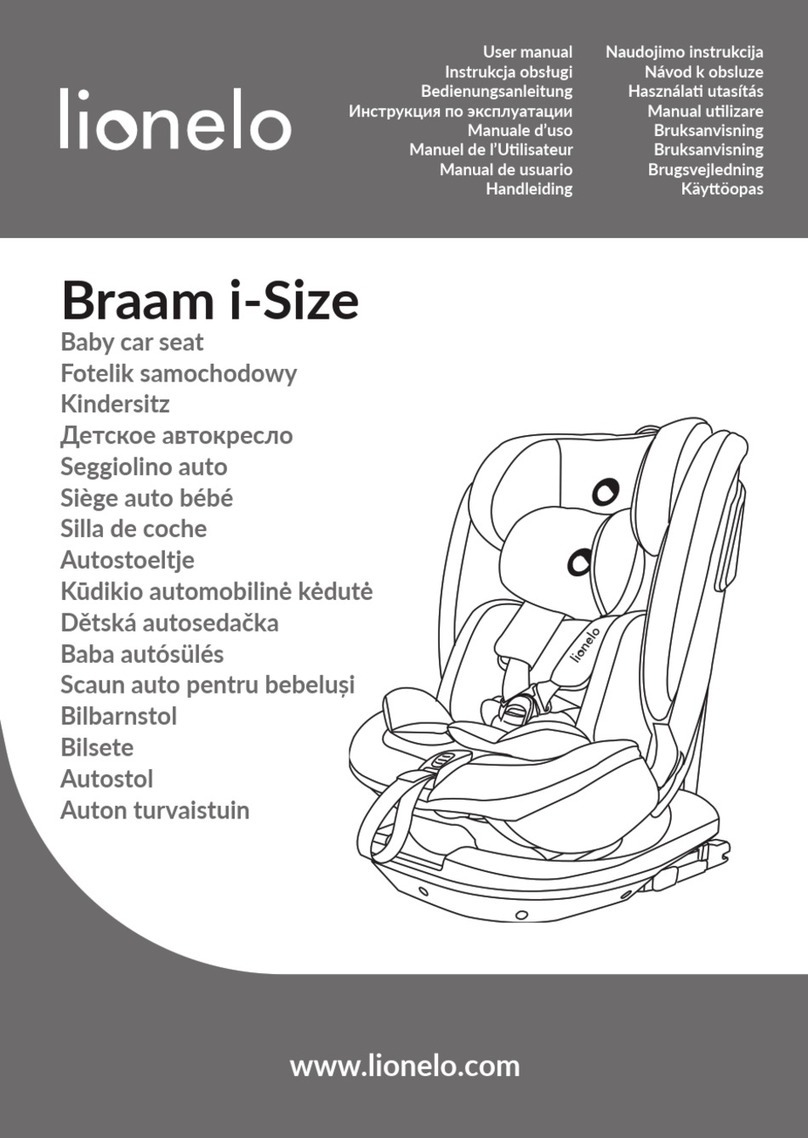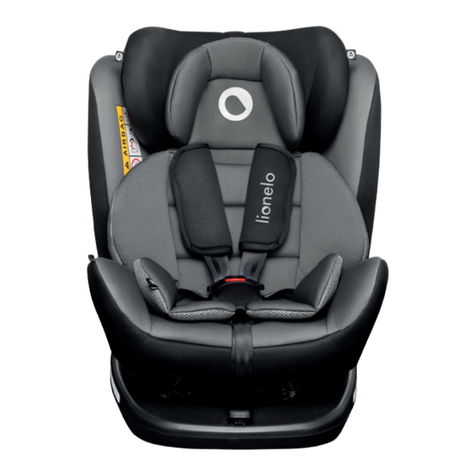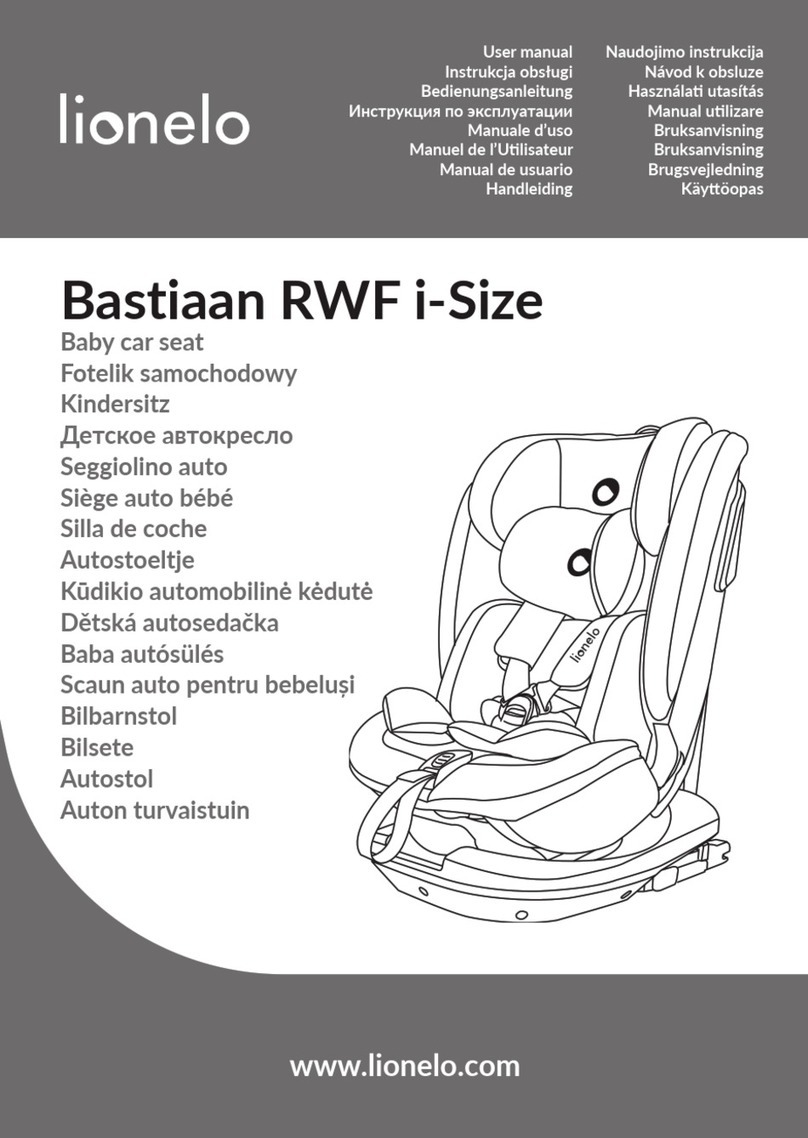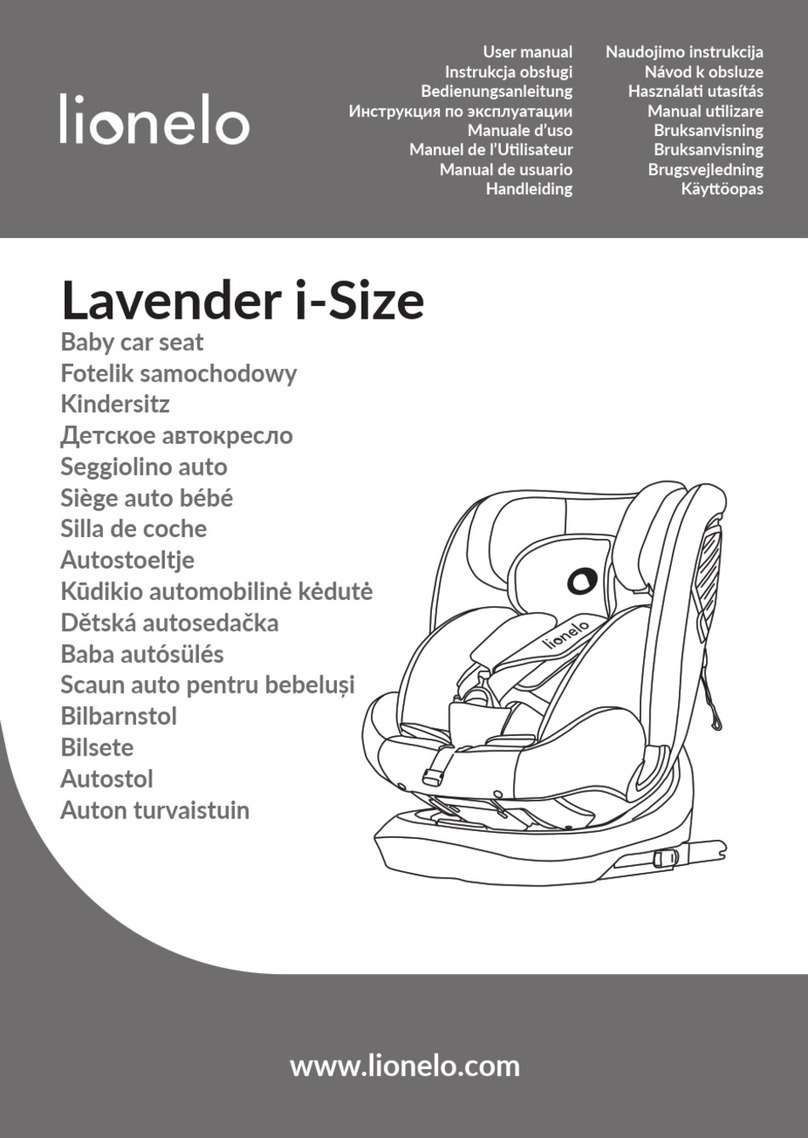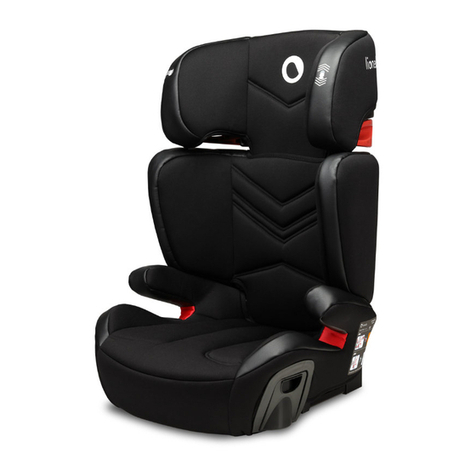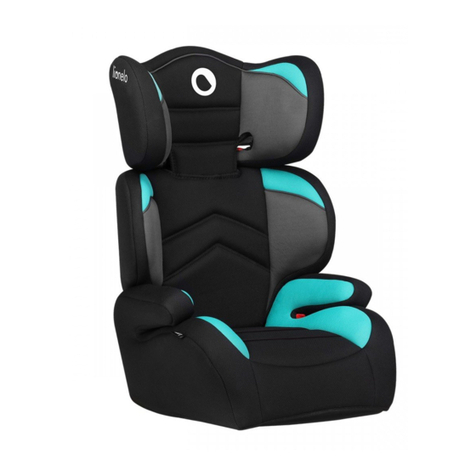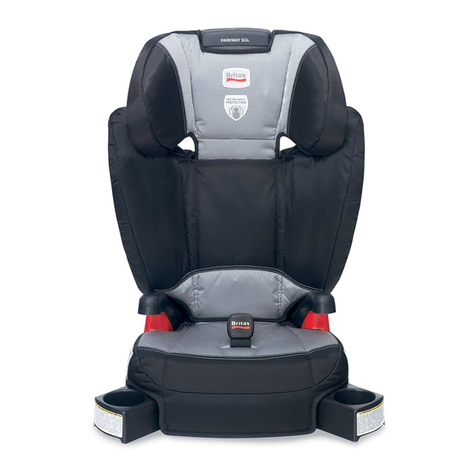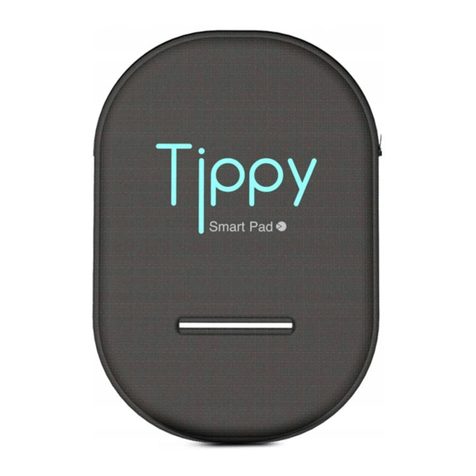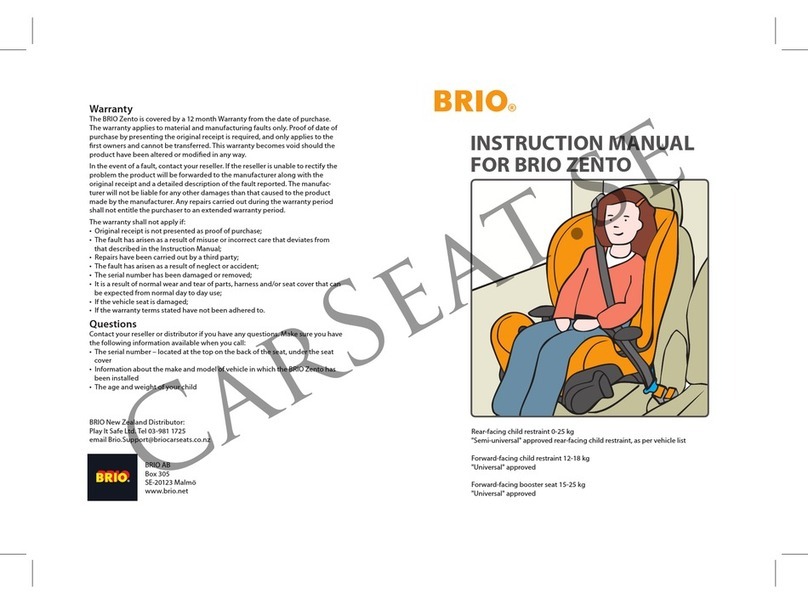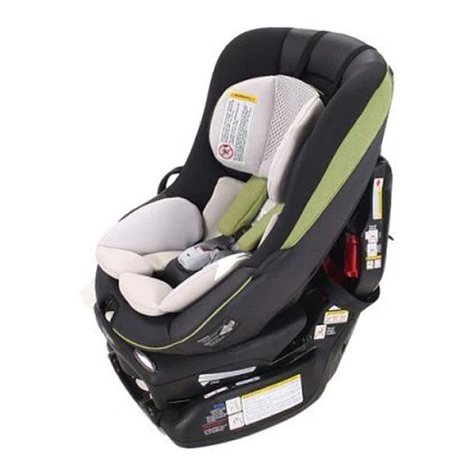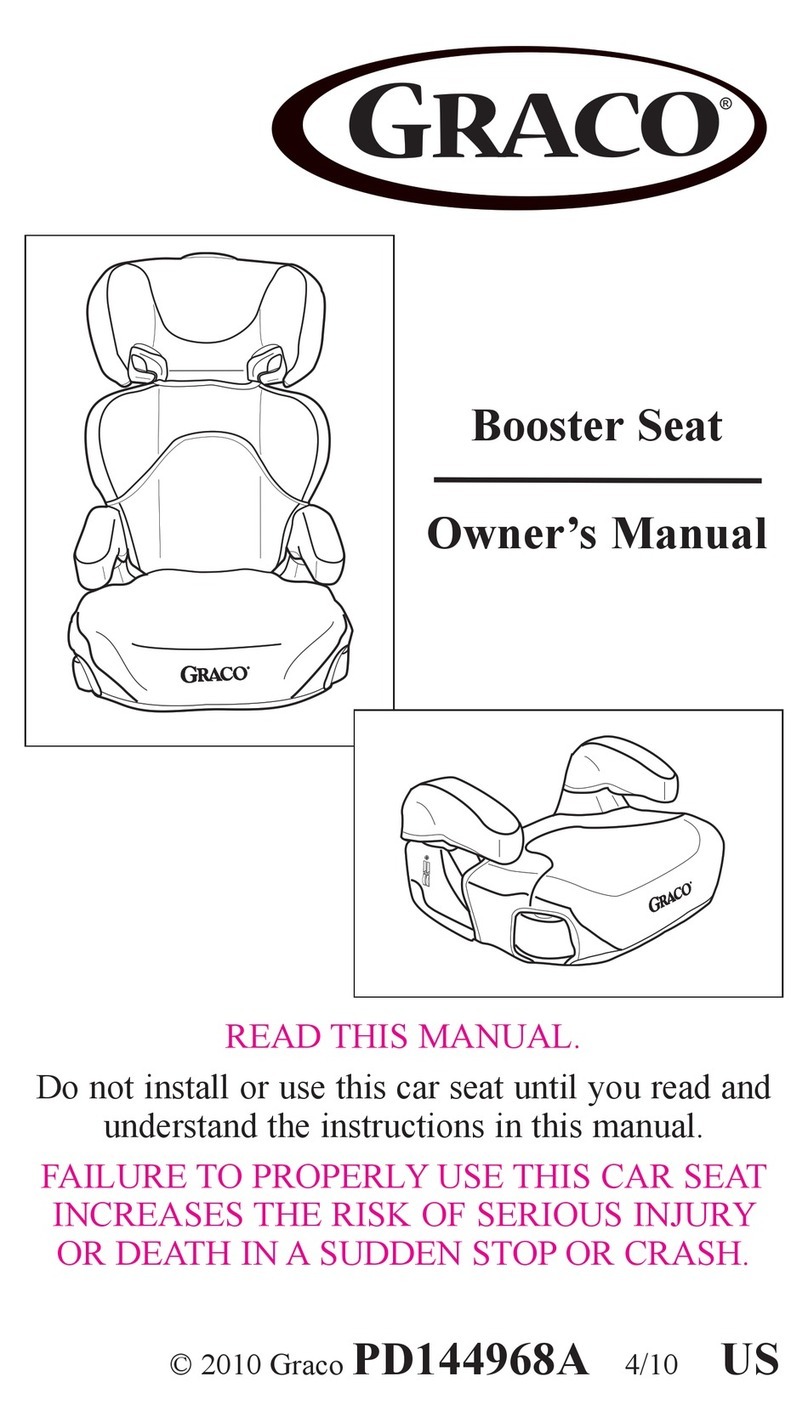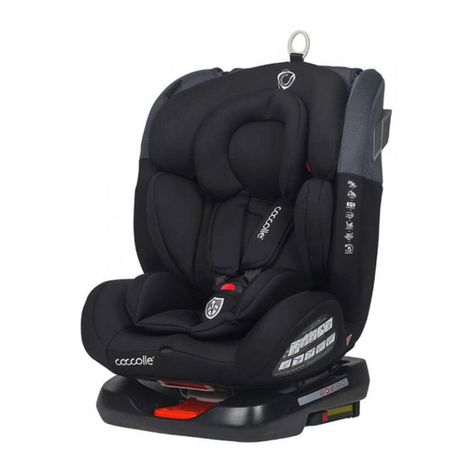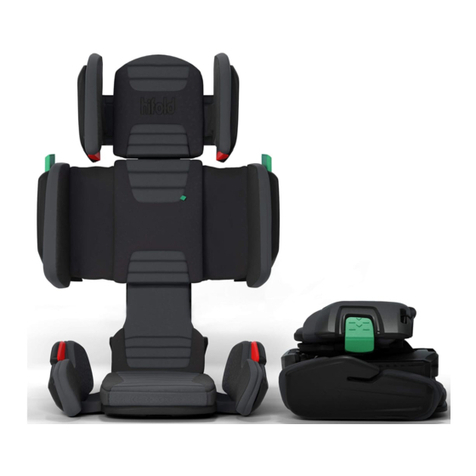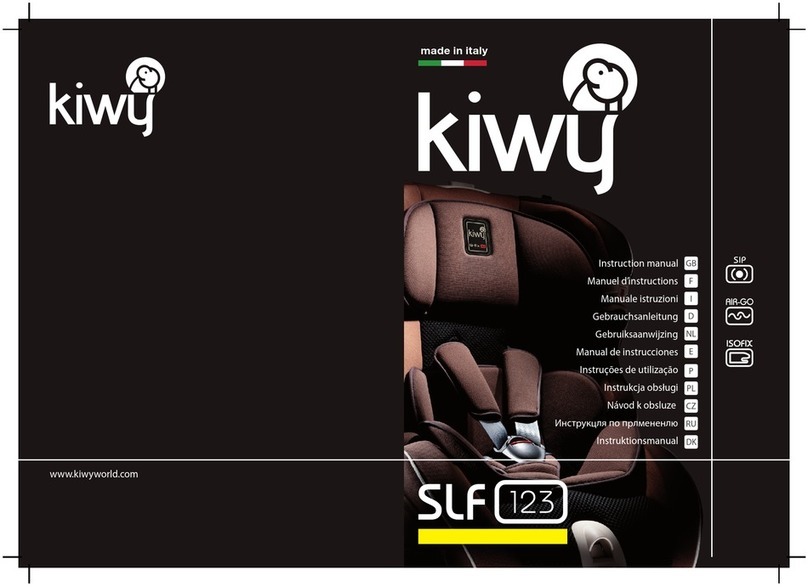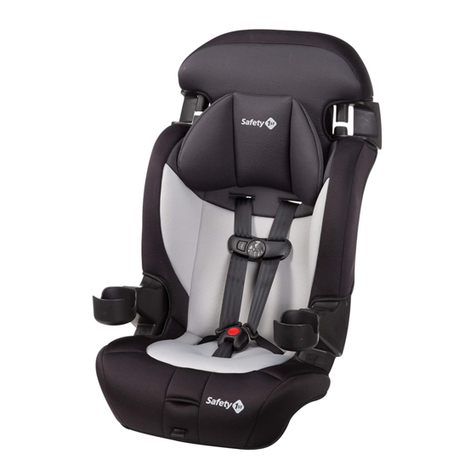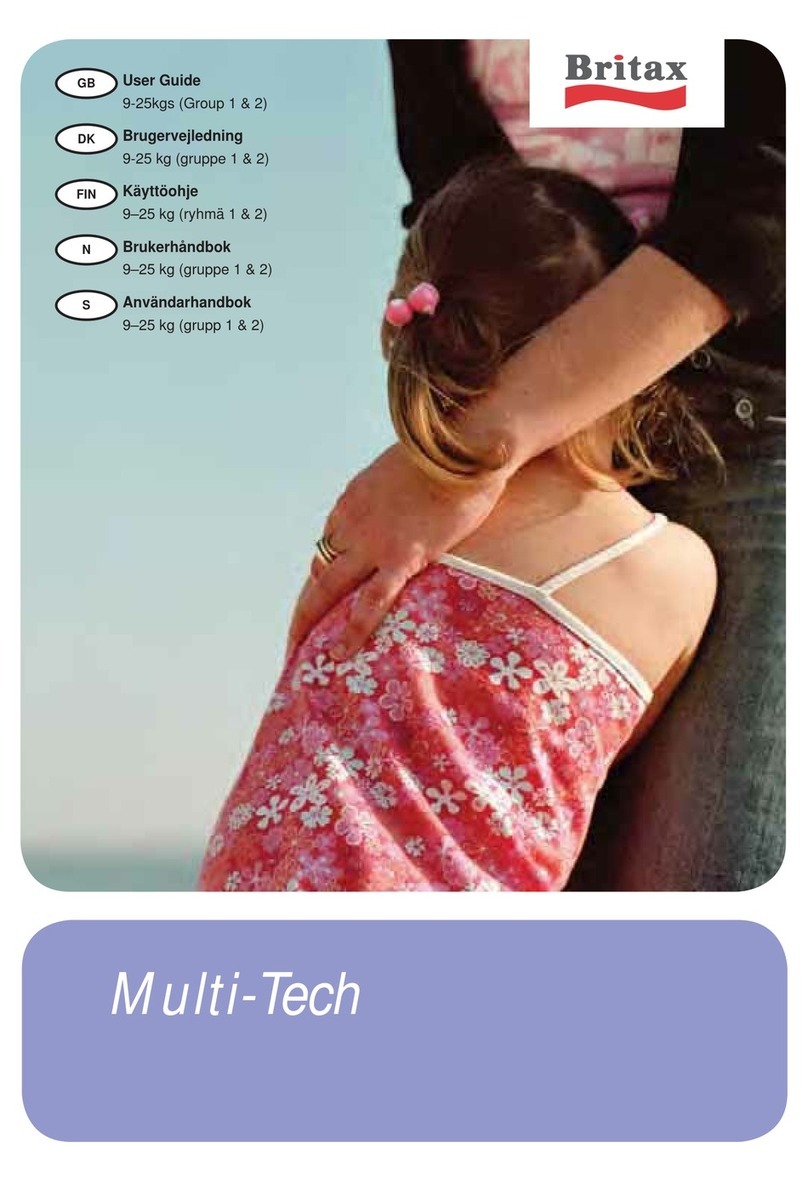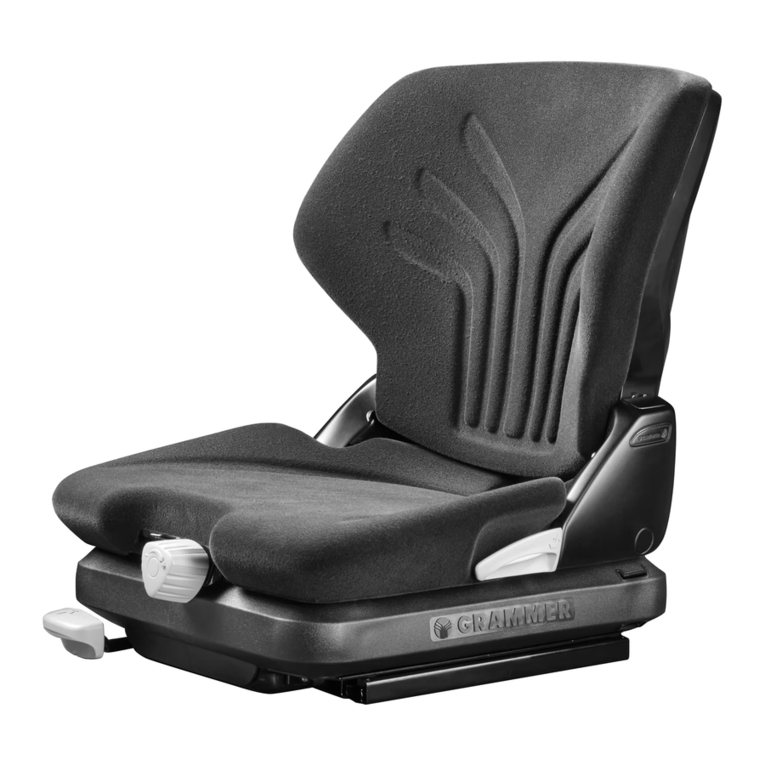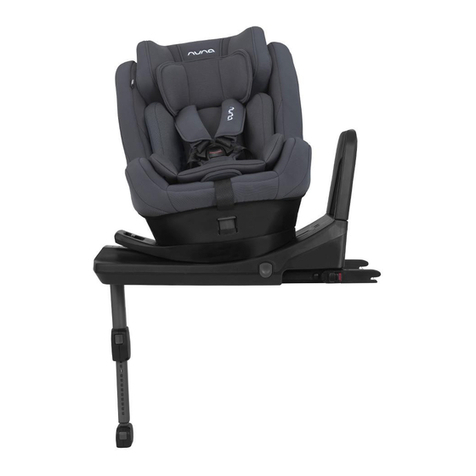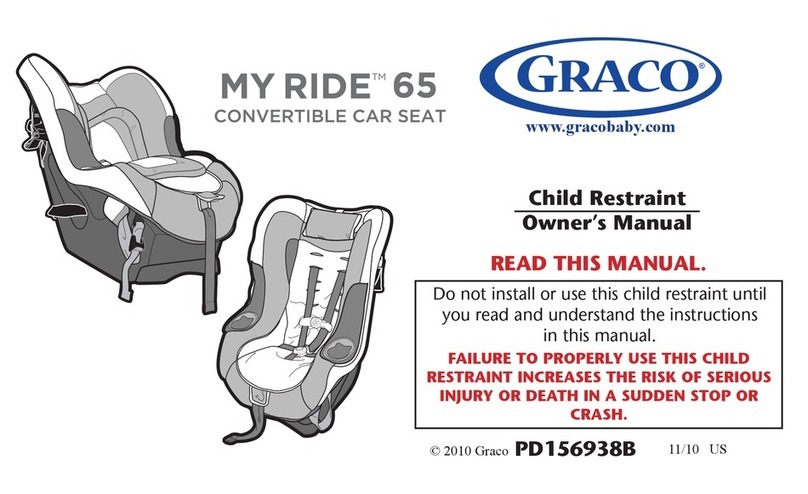
‑ 9 ‑ EN
• Plas c elements of this child safety seat may heat up in the sun and cause sunburns.
• Protect your child and child safety seat against sunlight (for example you can cover it with
a light clothing). If the child safety seat is not covered, try not to expose it to the sunlight.
Otherwise the child safety seat may be too hot for your child’s skin.
• Never leave your child in the car una ended.
•
Luggage and similar elements must be secured in order not to cause any injuries and
damage in case of collision. In the event of a road accident, unsecured items may be deadly.
• You should not use the child safety seat without its fabric cover. It is an integral part
of the set and in uences the opera on of the restraint system.
• You must not subs tute the cover for a cover from other set.
•
Keep the child safety seat manual. Keep it in the car in which you have installed the seat.
•
If you assemble ISOFIX child restraint system, please get familiar with the vehicle
manufacturer’s manual.
• It is forbidden to use other points of contact than those described in the manual and marked
on the child restraint system.
•
In case of any doubts regarding the posi on of the safety belts buckle for adults in
rela on to main points of contact, please contact the child safety seat manufacturer.
•
A en on – do not use forward-facing child seat if the child’s weight does not exceed 9 kg
Safety in the car:
To provide top safety to yourself and passengers during travel, make sure:
• Folding elbow rests have been folded (ver cal posi on).
• If the child safety seat is mounted on the passenger’s front seat, this seat is pushed
to the back as far as possible.
•
Any items which may cause damage in the car in case of collision have been secured properly.
• All passengers have fastened their seat belts.
The child safety seat is suitable for installa on only on forward-facing car seats. It is forbidden
to mount the child safety seat on rear-facing seats/couches. They are used e.g. in vans or
minibuses.
NOTE! When installed with car seat belts: never use the child safety seat with 2-point
safety belts.
see g. a,b
Correct posi on of the child safety seat in the car
Wrong posi on of the child safety seat in the car
? 1 Do not place the rearward facing child seat here if the front airbag is ac ve.
? 2 Assembly here is only possible if the child seat can be a ached using the
3-point seat belt.

